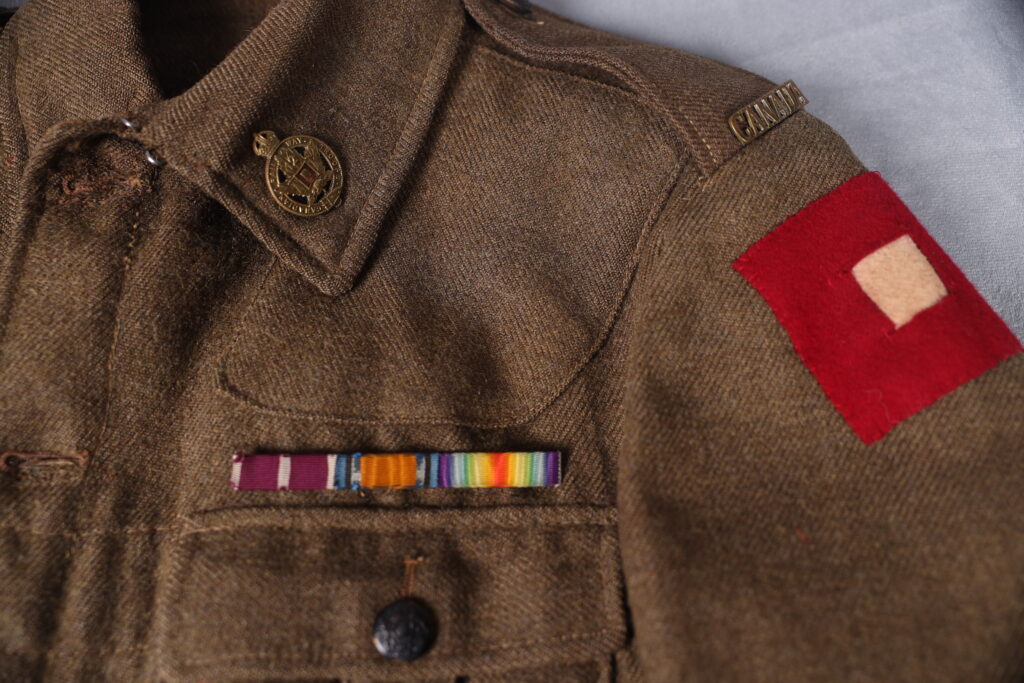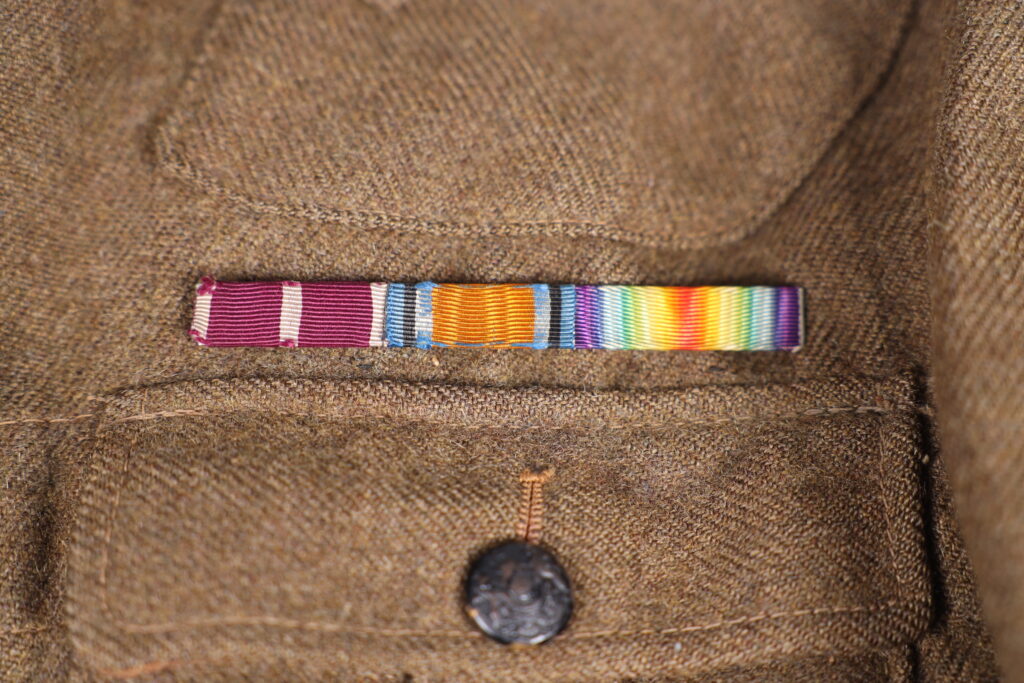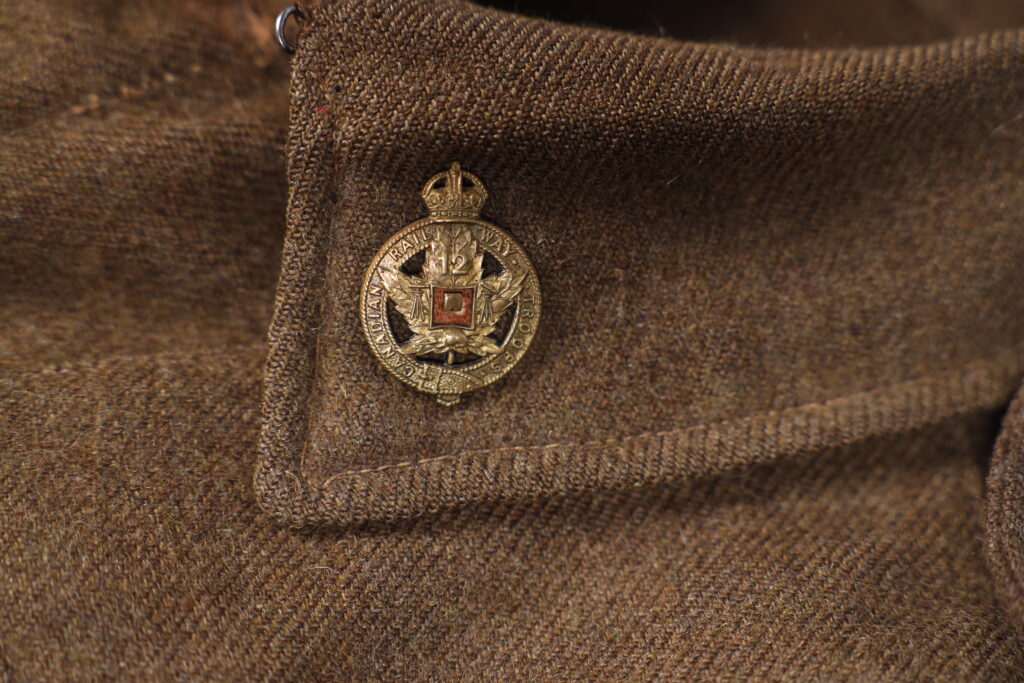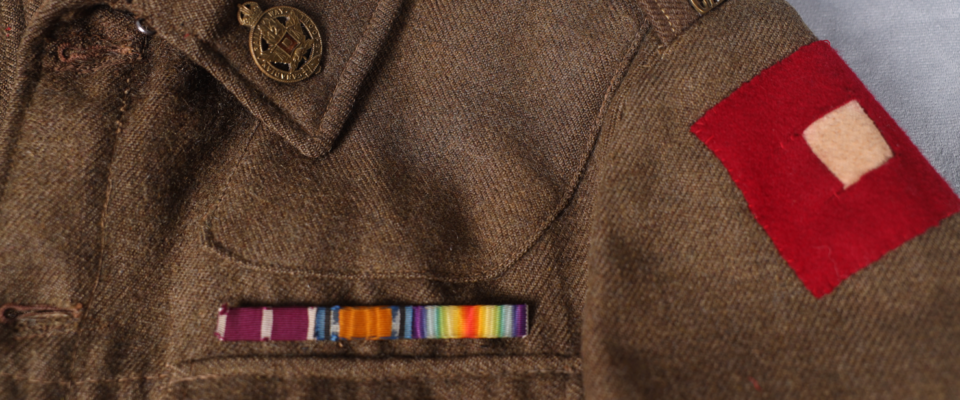Our friends at the Royal Canadian Military Institute (RCMI) have graciously contributed this month’s blog post. Ryan Goldsworthy, RCMI Museum Director & Curator, is a military historian and material history expert from Toronto. Ryan has shared an in-depth look at the uniform of Sergeant William Biggs of the Canadian Railway Troops (CRT).
About the Royal Canadian Military Institute
The Royal Canadian Military Institute (RCMI) is one of Canada’s oldest museums. Founded in 1890, the RCMI is the largest military history museum in Toronto with six floors of display space and over 12,000 objects. The museum’s collection truly shines and distinguishes itself through its military uniform collection. Indeed, the RCMI maintains the most diverse and complete collection of Canadian First World War uniforms in existence. Most of these uniforms were acquired from the collection of J. Victor Taboika, a prominent private collector of over 35 years from Calgary, Alberta. I formerly worked with Taboika at The Military Museums of Calgary (2015-2016) where we together organized a singular display featuring dozens of uniforms and hundreds of additional objects for the centennial of the war. Following the display in Calgary, I facilitated the donation of most of these uniforms to the RCMI.

Canadian Railway Troops Uniform
One of these uniforms, now in the collection of the RCMI, is named to a Sergeant William Thomas Biggs of the Canadian Railway Troops (CRT). This exquisite and original uniform should be of particular interest to the Toronto Railway Museum and its audiences. Sgt Biggs’ service dress jacket is complete with pristine CRT patches, rank insignia, collar badges, and medal ribbons. Biggs’ accompanying cap is adorned with a stunning 12th CRT cap badge in excellent condition – see the still-intact red fabric inset on the badge. The thin leather chin strap can also be seen above the cap’s brim. This other ranks (non-officer) uniform is likely the best extant example from the CRT.


Sergeant Biggs
William Biggs himself was born on 9 April 1881 in Cambridge, England. Prior to the war, Biggs was employed as a trainman in Montreal, Quebec. On 28 August 1916, at 34 years old, he chose to enlist in the Canadian Expeditionary Force (CEF) where he was first assigned to the 79 Depot Battery (Canadian Field Artillery). Given his experience as a trainman, Biggs was soon designated to the No. 2 section of skilled railway employees. The CEF possessed many experienced railway personnel because of Canada’s creation and maintenance of many long railways tying the Dominion together. Indeed, the first Canadian railway companies, formed in May 1915 at the behest of the British Government, were composed of 500 former employees of the Canadian Pacific Railway (CPR). The CEF was often adept at assigning servicemen with relevant pre-enlistment experience and education to related roles in the armed forces- including engineers, teachers, police, doctors, nurses, pilots, hunters, cooks, and loggers.
“Utmost Disregard for His Own Safety”
In June 1917, Biggs departed Aldershot, England for Le Havre, France, and he was promoted to Sergeant by 1 August 1917. Biggs’ most notable moment of the war occurred on 20 September 1917 at an Allied railhead in France. On this date, at 3:15pm local time, a spark from a Decauville locomotive ignited some cordite and a large fire broke out. As a result of the fire, a dangerous “quantity of ammunition started detonating.” Biggs, who quickly went into action, gathered a party of men and pushed a burning truck of hay to a safe distance. He then brought his train engine forward and drew away two trucks of coal, and he finally returned to help suppress the fire. In recognition of his actions, where he reportedly “showed the utmost disregard for his own safety,” Biggs was awarded the Meritorious Service Medal (MSM) on 5 December 1918. Biggs’ MSM ribbon bar can be seen on his uniform along with his British War Medal (orange, blue, and white) and the Victory Medal (rainbow).



Railways during WWI
During the First World War, railway lines were a crucial aspect in the provision of ammunition, food, and supplies. In March 1917 (one month prior to Vimy Ridge), Canadian railway units were unified under an administrative headquarters as the Canadian Railway Troops. Following the victory at Vimy Ridge in April 1917, the Canadians henceforth carried out all light railway construction and maintenance on the British front. From April 1917 to the end of 1918, the Canadians laid 4,140 kilometres of various railway tracks on the Western Front. By the war’s end, the “Corps of Canadian Railway Troops,” was composed of over 13,000 personnel – 8,000 in active construction and 4,000 in repair duties.
– Ryan Goldsworthy
More From RCMI
The RCMI will be hosting its annual military history symposium at the museum on Saturday November 5 at 1:00pm – all are welcome to attend to hear topics from prominent historians and museum professionals on “new approaches to Canadian military history.” Please contact Ryan Goldsworthy directly if you would like to attend. He can be reached via email at ryan(dot)goldsworthy(at)rcmi(dot)org.


About the Author
Ryan Goldsworthy is a military historian and material history expert from Toronto who is the Museum Director & Curator of the Royal Canadian Military Institute. Find him on Instagram here.
